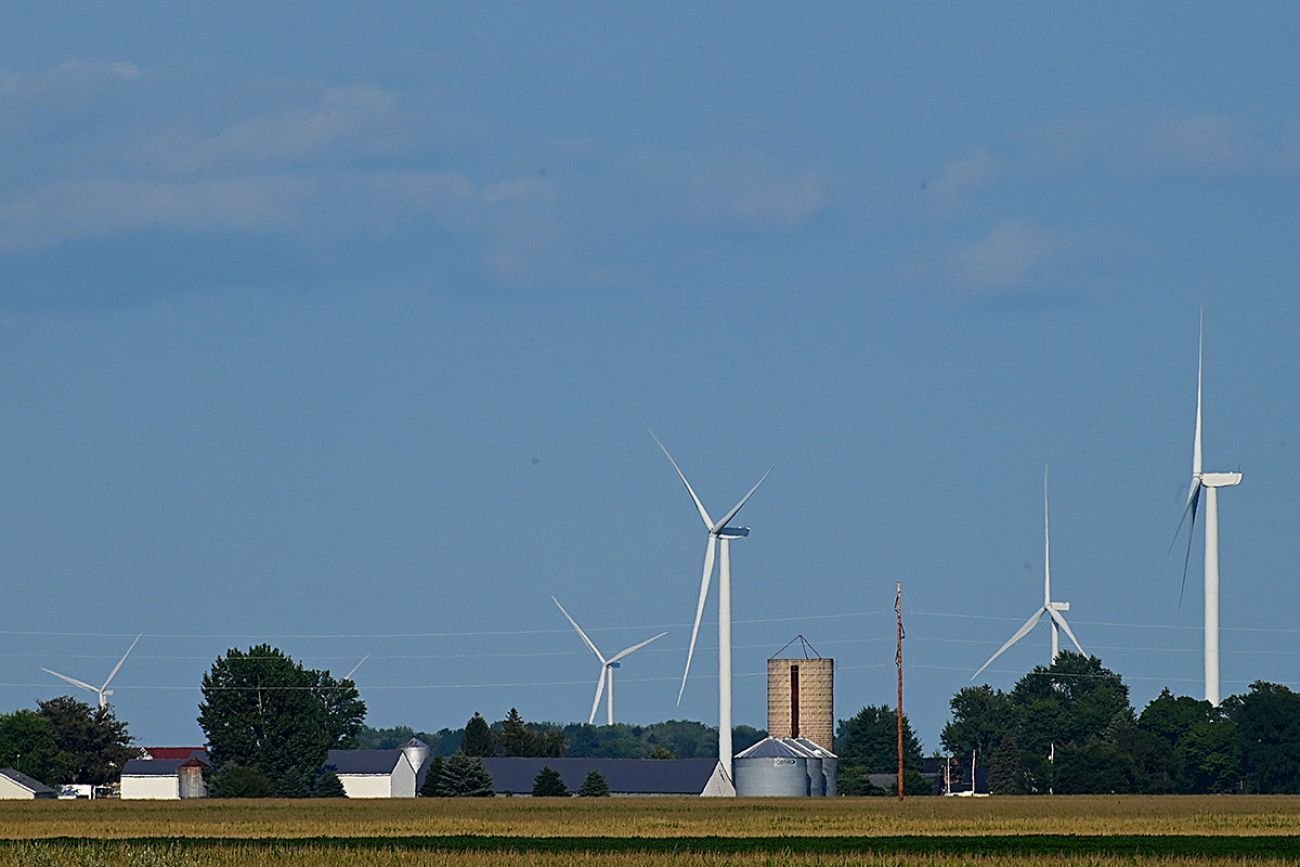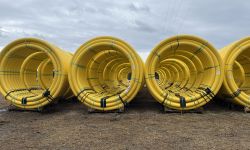Michigan has 9 months to figure out new energy law. Some say time is wasting


- Public Act 233 shifts permitting authority for large-scale wind and solar arrays from local governments to the state
- Michigan regulators have until Nov. 29 to craft regulations for the new law
- Experts say local governments need more guidance — and soon — about how to comply
A new law takes effect in less than nine months giving Michigan power to approve or deny large wind and solar projects, and state regulators face the hefty task of figuring out how to enforce it.
During the first in a series of meetings Thursday to gather feedback, experts, advocates and citizens listed a host of unanswered questions. Time is of the essence, as local governments hurry to write ordinances before the law takes effect on Nov. 29.
“As a municipal attorney, we’d like to start moving right now, hopefully with more guidance from the (state),” said attorney Catherine Kaufman, one of three experts invited to speak Thursday to staffers of the Michigan Public Service Commission.
Related:
- State board OKs petition to repeal Michigan renewable energy siting law
- Michigan lawmakers have more energy priorities in 2024
- Whitmer signs energy bills to make Michigan use clean energy by 2040
The meeting stems from Public Act 233, one of several laws passed in November to facilitate Michigan’s energy transition. The law aims to speed deployment of renewable energy by shifting ultimate permitting authority from local governments to the commission, which oversees utilities.
Democratic lawmakers pushed for the change, which applies to solar and energy storage projects of at least 50 megawatts, and wind projects of at least 100 megawatts, in hopes of circumventing local resistance that has tanked large energy projects across the state.
The move is controversial, and an effort is underway to repeal the law through a ballot initiative. Opponents contend the law undercuts Michigan’s long tradition of local control over land use.
In the past, local governments had broad authority to decide whether to allow renewable energy projects. They have sometimes blocked developments altogether, prompting fears from environmentalists and utilities that Michigan will fall short of its goal to get off fossil fuels by mid-century, worsening the climate crisis.
The new law instead establishes statewide standards — for instance, spelling out how far developments must be set back from neighboring homes — and generally requires local communities to approve projects that meet those standards.
Local governments can retain power to approve or reject proposed facilities if they have a renewable energy ordinance that aligns with state standards.
If they fail to write an ordinance, or write one that doesn’t align with the state standards, permitting becomes the Public Service Commission’s job.
“Time is rapidly ticking away for municipalities to identify which venue they want to follow,” Kaufman said Thursday.
Hundreds of localities across Michigan have developed local ordinances about wind and solar development.
Few would comply with the new law, said University of Michigan researcher Sarah Mills, who directs the Center for EmPowering Communities at the Graham Sustainability Institute.
Because many municipalities hire consultants to write policies and need a few months to approve ordinances, time is slipping away, Kaufman said.
Others on Thursday said it’s still unclear how Michigan’s new siting law will function.
For instance, the law limits how much noise wind and solar developments can emit, where they can be located and how they must be built. But the law doesn’t specify who will enforce limits or identify who will train local emergency crews for potential disasters.
“Who's going to do the day-to-day monitoring of the project and making sure it's staying in compliance with its approval?” said Kaufman.
Mills warned that if communities feel railroaded by state regulators, the new permitting system could backfire and slow the energy transition.
“I'm cognizant that you're not going to please everyone,” said Mills, but how people feel about the approval process for renewable projects in their community “matters in the long haul.”
The commission has more meetings planned to gather feedback on March 19, April 5 and 26, and May 17. A recommendation on rules is likely by June 21.
Michigan Environment Watch
Michigan Environment Watch examines how public policy, industry, and other factors interact with the state’s trove of natural resources.
- See full coverage
- Subscribe
- Share tips and questions with Bridge environment reporter Kelly House
Michigan Environment Watch is made possible by generous financial support from:
Our generous Environment Watch underwriters encourage Bridge Michigan readers to also support civic journalism by becoming Bridge members. Please consider joining today.
See what new members are saying about why they donated to Bridge Michigan:
- “In order for this information to be accurate and unbiased it must be underwritten by its readers, not by special interests.” - Larry S.
- “Not many other media sources report on the topics Bridge does.” - Susan B.
- “Your journalism is outstanding and rare these days.” - Mark S.
If you want to ensure the future of nonpartisan, nonprofit Michigan journalism, please become a member today. You, too, will be asked why you donated and maybe we'll feature your quote next time!




